The Colosseum / Constantine's Arch
Back to Italy 2016 Index
Rome - Around the City
Bus Tour
Rome at Night
Vatican and St. Peter's
The timeless beauty of the Colosseum ruins speaks to us from
the past of the immense glory and power of the Romans. Even
with its two outer rings destroyed by earthquakes and carted off,
and its face pock-marked with scars of iron scavengers, it dominates
the forum. One can only imagine what it might have looked like in
the full scope of it's architectural and engineering genius.
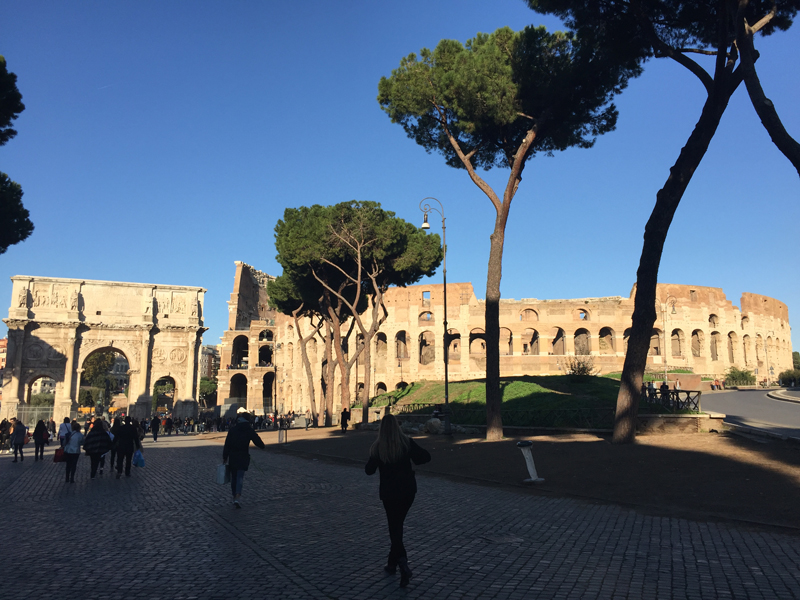 |
| The
oval amphitheatre in the centre of the city is built of stone, concrete and
sand, and it is the largest amphitheatre ever built. The Colosseum is
situated just east of the Roman Forum. Construction began under the
emperor Vespasian in AD 72, and completed in AD 80 under his successor
and heir, Titus. Further modifications were made during the reign of Domitian (81-96.) |
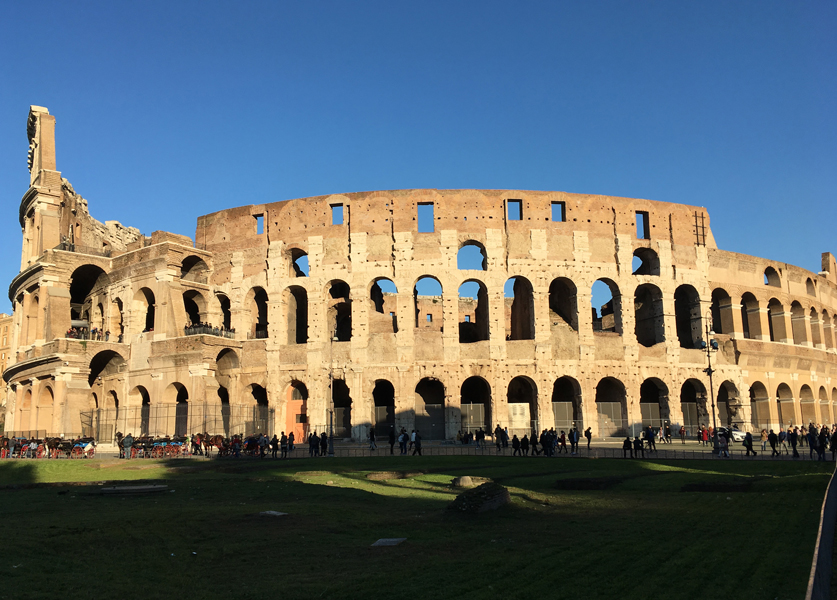 |
| The
name Colosseum has long been believed to be derived from a colossal
statue of Nero. This statue was later remodeled by Nero's
successors into the likeness of Helios (Sol) or Apollo, the sun god, by
adding the appropriate solar crown. Nero's head was also replaced
several times with the heads of succeeding emperors. Despite its pagan
links, the statue remained standing well into the medieval era and was
credited with magical powers. It came to be seen as an iconic symbol of
the permanence of Rome. |
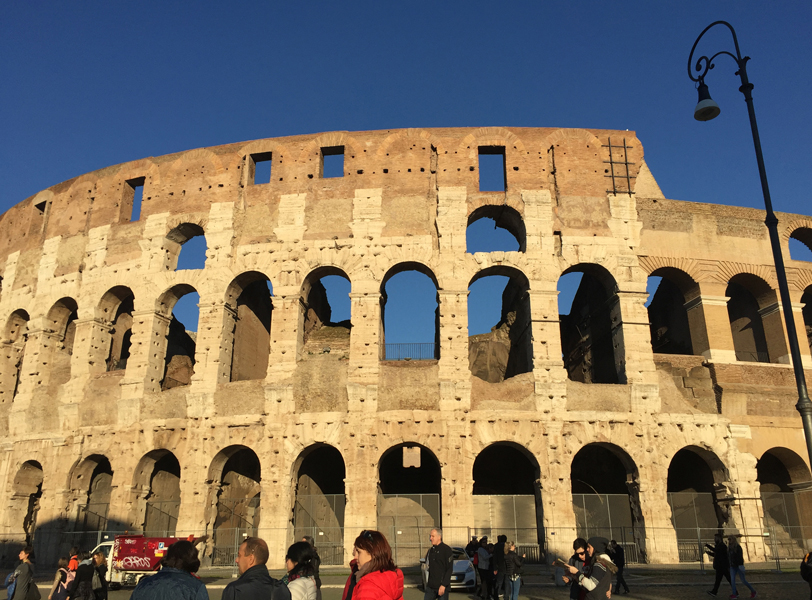 |
| Construction
was funded by the opulent spoils taken from the Jewish Temple after the
Great Jewish Revolt in 70 AD led to the Siege of Jerusalem.
According to a reconstructed inscription found on the site, "the
emperor Vespasian ordered this new amphitheatre to be erected with his
general's share of the booty." Along with the spoils, an estimated
100,000
Jewish prisoners were brought back to Rome after the war, and many were
enslaved into the massive workforce needed for construction. |
 |
| Severe
damage was inflicted on the Colosseum by the great earthquake in 1349,
causing the outer south side, lying on a less stable alluvial terrain,
to collapse. Much of the tumbled stone was reused to build palaces,
churches, hospitals and other buildings elsewhere in Rome. |
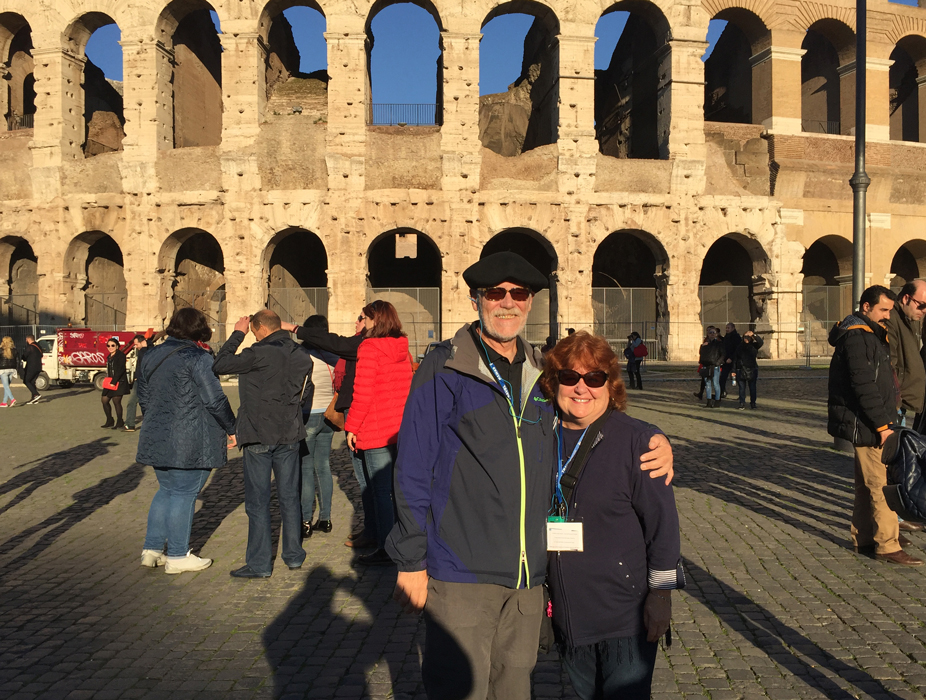 |
 |
| The Arch of Constantine, constructed between 312 and 315 A.D. |
 |
| Though
dedicated to Constantine, much of the decorative material incorporated
earlier work from the time of the emperors Trajan (98–117), Hadrian
(117–138) and Marcus Aurelius (161–180), and is thus a collage.
The last of the existing triumphal arches in Rome, it is also the only
one to make extensive use of 'spolia', reusing several major reliefs
from 2nd century imperial monuments. |
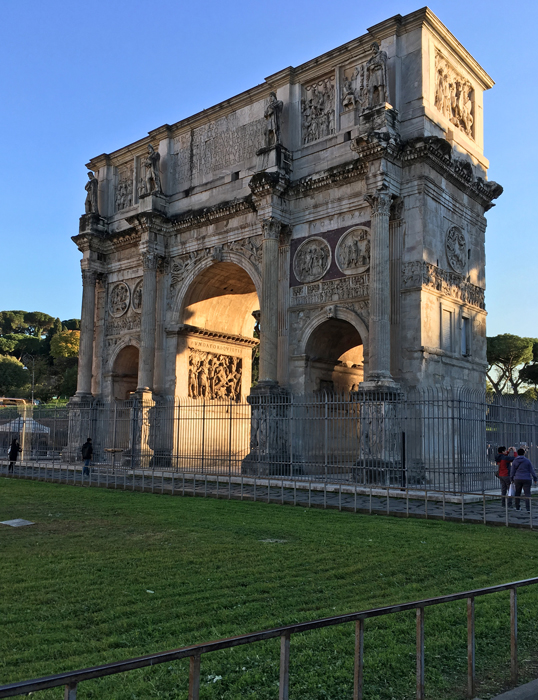 |
| North side, from the direction of the Colosseum. |
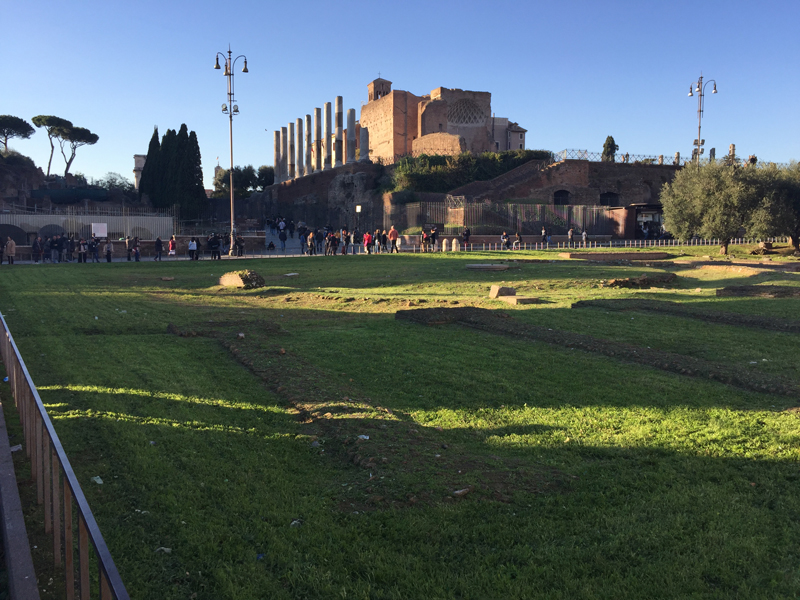 |
| Palatine Hill. |
Back to Italy 2016 Index
Rome - Around the City
Bus Tour
Rome at Night
Vatican and St. Peter's